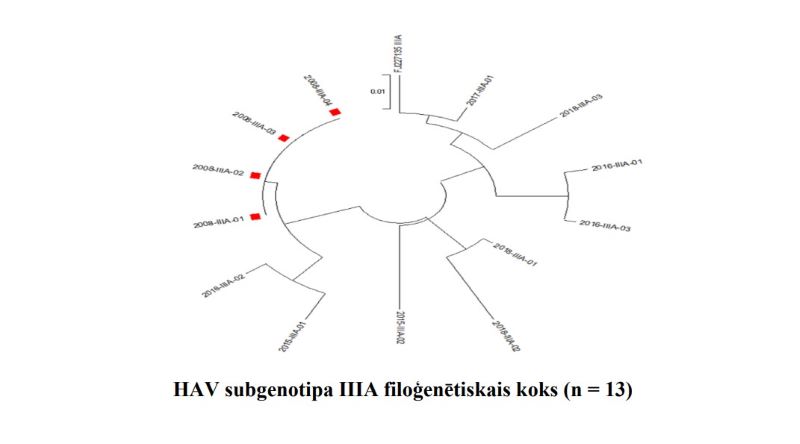Dissertation study on viral hepatitis A in Latvia
Viral hepatitis A is an infectious liver disease caused by the hepatitis A virus (HAV). HAV was very common in Latvia until the mid-1990s, but the number of cases decreased in 2000 and continued to decrease until 2007, when the number of confirmed cases was at its lowest. However, there were several outbreaks of HAV between 2008 and early 2010 and between 2017 and 2018, therefore
the risk of the infection spreading still exists.
HAV is most commonly spread through contaminated food or water and through household contact. Sexual transmission is also possible – there is evidence of transmission among men who have sex with men. HAV can live for long periods in water (up to 92 days) and is quite persistent in the surrounding environment.
Oksana Savicka, PhD student and assistant professor at the RSU Department of Infectology, and head of the National Microbiology Reference Laboratory of the Latvian Centre for Infectology, RAKUS Laboratory Service, has studied the prevalence of viral hepatitis A and the factors that influence its spread in our country in her thesis
Molecular Epidemiological Characterisation of Hepatitis A Virus in Latvia.
Molecular epidemiology is a branch of epidemiology that uses molecular biology alongside traditional epidemiological methods to study genetic and environmental factors that contribute to the emergence and spread of diseases.
The molecular epidemiology of HAV focuses mainly on two aspects: genotyping and phylogenetic analysis.
Genotyping
HAV can be divided into seven genotypes (I to VII) based on genetic differences in the viral genome. Each genotype is divided into subgenotypes (subtypes) A and B.
Phylogenetic analysis
By comparing the genetic sequences of different HAV strains, scientists can build phylogenetic trees to understand the evolution and geographical spread of the virus. Phylogenetic analysis helps trace the source of outbreaks, identify modes of transmission, and monitor the global spread of different HAV genotypes.
 Image from Oksana Savicka’s dissertation
Image from Oksana Savicka’s dissertation
The HAV subgenotypes that are circulating in Latvia – IA, IB and IIIA – are also the most prevalent worldwide. The data shows that HAV subgenotype IA has 13 clusters and 12 separate infection cases, HAV subgenotype IB has eight clusters and 11 separate infection cases, while HAV subgenotype IIIA has one cluster and nine separate infection cases. Sequencing data helps to track the spread of infection and any new hepatitis A cases can be quickly identified from the phylogenetic tree and the already known clusters.
The investigated cases revealed a variety of sources of infection. The most frequent cause of infection is contact with a hepatitis A patient and is related to travel to other countries. There is also possible spread between intravenous drug users and men who have sex with men.
HAV has been observed regularly in Latvia, but with varying intensity, which may indicate local circulation of the virus.
The use of molecular biological methods for HAV and careful analysis of epidemiological data can help us better understand the routes of transmission, investigate outbreaks, detect imported cases, and trace the circulation of the virus. This enables timely and adequate actions to prevent the spread of infection.
Oksana Savicka will defend her doctoral dissertation Molecular Epidemiological Characterisation of Hepatitis A Virus in Latvia on 9 May 2024.
Read more
Related news
 RSU is growing and developing: major reconstruction underway in the main buildingDevelopment, For RSU Employees, For Students
RSU is growing and developing: major reconstruction underway in the main buildingDevelopment, For RSU Employees, For Students


